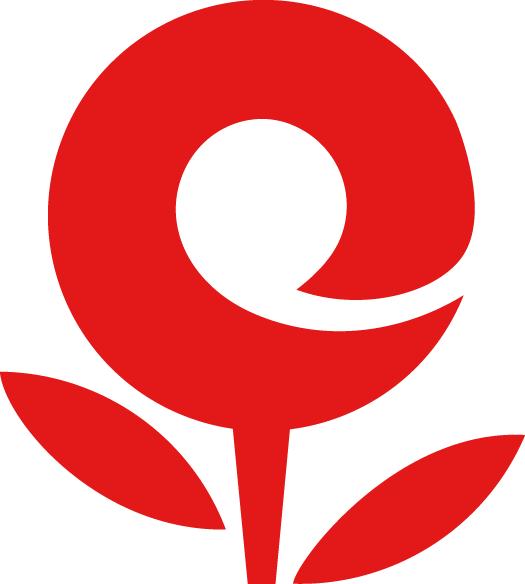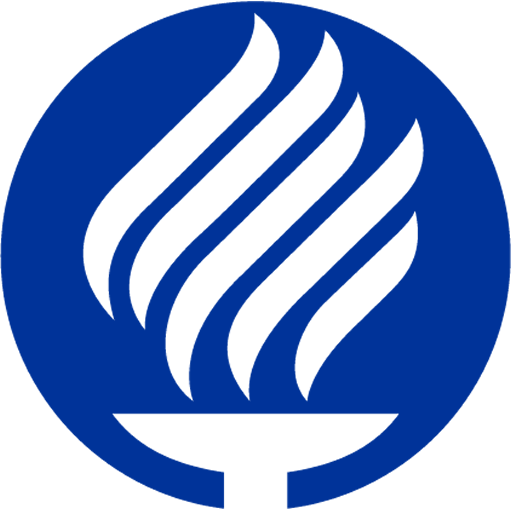CONVOCATORIA Vol. 15. Núm. 28: Inteligencia artificial y creatividad en las artes / Artificial Intelligence and Creativity in the Arts.
Publicado el 2023-06-30Fecha de inicio: 01-07-2023
Fecha de cierre: 01-03-2024
Publicación definitiva: 15/10/2024
________
Start date: 07-01-2023
Closing date: 01-03-2024
Definitive publication: 10/15/2024
Enfoque
La creatividad, como cualidad humana –aunque se presenta también en animales–, está irremediablemente asociada a la tecnología y, en gran medida, se debe también a ella. Recientemente, los avances de la tecnología informática y, en particular en la inteligencia artificial (IA), han propiciado nuevas formas de creatividad en el diseño, el arte, la comunicación y la ciencia (Gero 1994; Colton 2012; Simonton 2004), entre otros. Las máquinas dotadas de distintos algoritmos de IA han sido utilizadas en estos y otros ámbitos con distintos grados de efectividad y han suscitado controversias debido al impacto que tienen ya –y se prevé que tendrán en un futuro no muy lejano– en la vida de los seres humanos. Entusiastas de la tecnología digital, provenientes de distintos campos, utilizan la IA de distintas formas: los artistas de nuevos medios encuentran en ella nuevas formas de expresión y nuevos focos de cuestionamiento y reflexión (Gemeinboeck y Saunders 2013); los tecnólogos con interés en el diseño y en distintas formas de creación: música, artes visuales, arquitectura, y otras, se han enfocado en la posibilidad de utilizar IA en la creación, dando cierta autonomía a una computadora dentro de un proceso creativo, ya sea en solitario o en colaboración. Este último enfoque se llama Creatividad Computacional y se ha constituido como un tema de pujante interés en la actualidad (Besold, Schorlemmer, y Smaill 2015).
La creatividad es un aspecto importante de la inteligencia y, como tal y por su interés práctico y teórico, se estudia por separado de la IA. Algunas de las preguntas en ambos campos son similares: ¿Puede una máquina ser creativa? ¿Cómo medimos la creatividad en las máquinas? y otras no tanto: ¿Puede una máquina ser creativa en colaboración con otros agentes (humanos, máquinas, animales, etc.)? ¿En qué forma?
Los interesados en la creatividad y las computadoras parecen haberse aglutinado alrededor de dos campos: los que utilizan las máquinas para potenciar o asistir la creatividad humana (Cómputo Creativo) (Latulipe 2013) y los que se interesan por hacer sistemas que llevan a cabo actividades que, de ser ejecutadas por personas, serían consideradas creativas (Creatividad Computacional). Esta última definición de máquina creativa, que es una de las más utilizadas (Colton y Wiggins 2012), abre otras preguntas como: si la máquina interactúa con una persona durante el proceso de creación, ¿qué parte del crédito por la creatividad puede ser asignado a ésta? si las máquinas pueden ser reconocidas como agentes creativos dentro de una colaboración (cocreación), ¿podrían entonces también ser consideradas socios de los otros agentes (humanos o no) y no solamente como herramientas: ¿Cuándo dejaría una computadora de ser una herramienta para convertirse en un socio en una actividad determinada?
En este número de Virtualis tomaremos este debate en el contexto del arte y, a través de algunos expertos en el tema, llevar al lector hasta el punto donde ambas vertientes del trabajo creativo con computadoras confluyen porque, bien miradas, son dos extremos de un mismo fenómeno.
Descriptores- Creatividad y tecnología
- Inteligencia Artificial, arte y creatividad
- Creatividad en el diseño, el arte, la comunicación y la ciencia
- Creatividad humana y creatividad computacional
- Nuevas formas de creatividad
- Diseño, Arte, Comunicación
- Máquinas con algoritmos de IA y creación humana
- Creatividad computacional, música, artes visuales, aquitectura, diseño
- Autonomía computacional frente a la creación humana
La creatividad es un aspecto importante de la inteligencia y, como tal y por su interés práctico y teórico, se estudia por separado de la IA. Algunas de las preguntas en ambos campos son similares:
- ¿Qué impacto tiene la inteligencia artificial en la creación artística?
- ¿Puede una máquina ser creativa?
- ¿Cómo medimos la creatividad en las máquinas?
- ¿Puede una máquina ser creativa en colaboración con otros agentes (humanos, máquinas, animales, etc.)?
- ¿En qué forma una máquina puede ser creativa en colaboración con un ser humano?
- ¿Si la máquina interactúa con una persona durante el proceso de creación, qué parte del crédito por la creatividad puede ser asignado a ésta?
- ¿Si las máquinas pueden ser reconocidas como agentes creativos dentro de una colaboración (cocreación), éstas, entonces pueden ser consideradas socios de los otros agentes (humanos o no) y no como herramientas?
- ¿Cuándo dejaría una computadora de ser una herramienta para convertirse en un socio en una actividad determinada?
Referencias
Besold, Tarek R., Marco Schorlemmer, y Alan Smaill. 2015. Computational Creativity Research:
Towards Creative Machines. Vol. 7. Atlantis Thinking Machines. Atlantis Press.
Colton, Simon. 2012. «The Painting Fool: Stories from Building an Automated Painter». En
Computers and Creativity, editado por Jon McCormack y Mark d’Inverno, 3-38. Berlin, Heidelberg: Springer Berlin Heidelberg. https://doi.org/10.1007/978-3-642-31727-9_1.
Colton, Simon, y Geraint A. Wiggins. 2012. «Computational Creativity: The Final Frontier?» En European Conference on Artificial Intelligence.
Gemeinboeck, Petra, y Rob Saunders. 2013. «Creative Machine Performance: Computational Creativity and Robotic Art». En Proceedings of the Fourth International Conference on Computational Creativity, 215. Citeseer.
Gero, John S. 1994. «Computational models of creative design processes». Artificial intelligence and creativity: An interdisciplinary approach, 1994.
Latulipe, Celine. 2013. «The value of research in creativity and the arts». En Proceedings of the 9th ACM Conference on Creativity & Cognition, 1-10. C&C ’13. New York, NY, USA:
Association for Computing Machinery. https://doi.org/10.1145/2466627.2485921.
Simonton, Dean Keith. 2004. Creativity in science: chance, logic, genius, and Zeitgeist. Cambridge, UK ; New York: Cambridge University Press.
_________________________________
Editor Temático Dr. Santiago Negrete (Universidad Autónoma Metropolitana, Unidad Cuajimalpa).Santiago Negrete es actualmente profesor investigador de tiempo completo de la UAM Cuajimalpa en el Departamento de Tecnologías de la información en la División de Ciencias de la Comunicación y Diseño. Tiene un doctorado en Inteligencia Artificial por la Universidad de Edimburgo y es matemático por la UNAM. Sus intereses de investigación giran alrededor de los medios computacionales, los procesos de software y la creatividad computacional. Ha sido además profesor en otras universidades como la UNAM, UAEM y el ITESM y consultor en varias empresas de tecnología de la información en México y en el extranjero. Universidad Autónoma Metropolitana (UAM- Cuajimalpa, México)
- E-mail: [snegrete@cua.uam.mx
- ORCID: https://orcid.org/0000-0002-6558-6538
- ResearchGate: https://www.researchgate.net/profile/Santiago-Negrete-Yankelevich
- Google Scholar: https://scholar.google.com/citations?user=fJaLXTUAAAAJ&hl=es
___________
Artificial Intelligence and Creativity in the Arts
Approach
Creativity, as a human quality –though it is also shown in animals– is unavoidably associated with technology and, to a large extent, it is also due to it. Recently, advances in computer technology and, in particular in Artificial Intelligence (AI), have provided new forms of creativity in Design, Art, Communication and Science (Gero 1994; Colton 2012; Simonton 2004). Machines equipped with different AI algorithms have been used in these and other areas with different levels of success and have caused controversies due to the impact they have, and are expected in the near future, in the lives of humans on Earth. Enthusiasts of digital technology coming from different backgrounds are using AI in different ways: artists from New Media find in it new forms of expression and new subjects for questioning and reflection (Gemeinboeck and Saunders 2013); Technologists with an interest in Design and in different forms of creation: music, visual arts, architecture, and others, have focused on the possibility of using AI in creation, giving certain autonomy to computers within a creative process, whether alone or in collaboration. The latter is called Computational Creativity and has become a topic of strong interest among both scholars and artists (Besold, Schorlemmer, and Smaill 2015).
Creativity is an important aspect of intelligence and, as such and because of its practical and theoretical interest, it is studied separately from AI. Some of the questions in both fields are similar: Can a machine be creative? How do we measure creativity in machines? and others not so much: Can a machine be creative in collaboration with other agents (humans, machines, animals, etc.)? In what way?
Those interested in creativity and computers seem to have coalesced around two fields: those who use machines to enhance or assist human creativity (Creative Computing) (Latulipe 2013) and those who are interested in designing systems that carry out activities that, if executed by people, would be considered creative (Computational Creativity). This last definition of a creative machine, which is one of the most used (Colton y Wiggins 2012), opens up other questions such as: if a machine interacts with a person during a creative process, what part of the credit for creativity can be conferred to the former? if machines can be recognized as creative agents within a collaboration (cocreation), these, then, can be considered partners of the other agents (human or otherwise) and not just as tools: ¿When would a computer stop being considered a tool to become a partner in a specific activity?
In this issue of Virtualis we will take this debate in the context of art and, through some experts in the subject, take the reader to the point where both aspects of creative work with computers converge because, well looked at, they are the extremes of the same phenomenon.
Research questions
Creativity is an important aspect of intelligence and, as such and due to its practical and theoretical interest, it is studied separately from AI. Some of the questions in both fields are similar:
- What impact does artificial intelligence have on artistic creation?
- Can a machine be creative?
- How do we measure creativity in machines?
- Can a machine be creative in collaboration with other agents (humans, machines, animals, etc.)?
- How can a machine be creative in collaboration with a human being?
- If the machine interacts with a person during the creation process, how much of the credit for the creativity can be assigned to the person?
- If machines can be recognized as creative agents within a collaboration (co-creation), then can they be considered partners of other agents (human or not) and not as tools?
- When would a computer stop being a tool and become a partner in a given activity?
______
Thematic editor Phd. Santiago Negrete (Universidad Autónoma Metropolitana, Unidad Cuajimalpa).- Santiago Negrete is currently a full-time research professor at the UAM Cuajimalpa in the Department of Information Technologies in the Division of Communication Sciences and Design. He has a PhD in Artificial Intelligence from the University of Edinburgh and is a mathematician from UNAM. His research interests revolve around computational media, software processes, and computational creativity. He has also been a professor at other universities such as UNAM, UAEM and ITESM and a consultant at various information technology companies in Mexico and abroad. E-mail: [snegrete@cua.uam.mx
- ORCID: https://orcid.org/0000-0002-6558-6538
- ResearchGate: https://www.researchgate.net/profile/Santiago-Negrete-Yankelevich
- Google Scholar: https://scholar.google.com/citations?user=fJaLXTUAAAAJ&hl=es
References
Besold, Tarek R., Marco Schorlemmer, y Alan Smaill. 2015. Computational Creativity Research:
Towards Creative Machines. Vol. 7. Atlantis Thinking Machines. Atlantis Press.
Colton, Simon. 2012. «The Painting Fool: Stories from Building an Automated Painter». En
Computers and Creativity, editado por Jon McCormack y Mark d’Inverno, 3-38. Berlin, Heidelberg: Springer Berlin Heidelberg. https://doi.org/10.1007/978-3-642-31727-9_1.
Colton, Simon, y Geraint A. Wiggins. 2012. «Computational Creativity: The Final Frontier?» En European Conference on Artificial Intelligence.
Gemeinboeck, Petra, y Rob Saunders. 2013. «Creative Machine Performance: Computational Creativity and Robotic Art». En Proceedings of the Fourth International Conference on Computational Creativity, 215. Citeseer.
Gero, John S. 1994. «Computational models of creative design processes». Artificial intelligence and creativity: An interdisciplinary approach, 1994.
Latulipe, Celine. 2013. «The value of research in creativity and the arts». En Proceedings of the 9th ACM Conference on Creativity & Cognition, 1-10. C&C ’13. New York, NY, USA:
Association for Computing Machinery. https://doi.org/10.1145/2466627.2485921.
Simonton, Dean Keith. 2004. Creativity in science: chance, logic, genius, and Zeitgeist. Cambridge, UK ; New York: Cambridge University Press.
______
Instrucciones y envío de propuestas: (Instructions and submission of proposals) https://www.revistavirtualis.mx/index.php/virtualis/about/submissionsNormas editoriales
(Editorial guidelines): https://www.revistavirtualis.mx/index.php/virtu
Propuestas para el Monográfico a través de la Plataforma OJS
(Proposals for the Monograph through the OJS Platform):
Portal web de la revista
(Journal website): https://www.revistavirtualis.mx/index.php/virtualis/about/contact

 Blog
Blog
 Instagram
Instagram
 Google
Google
 Tec de Monterrey
Tec de Monterrey